No Ordinary Place: Writers and Writing in Occupied Palestine
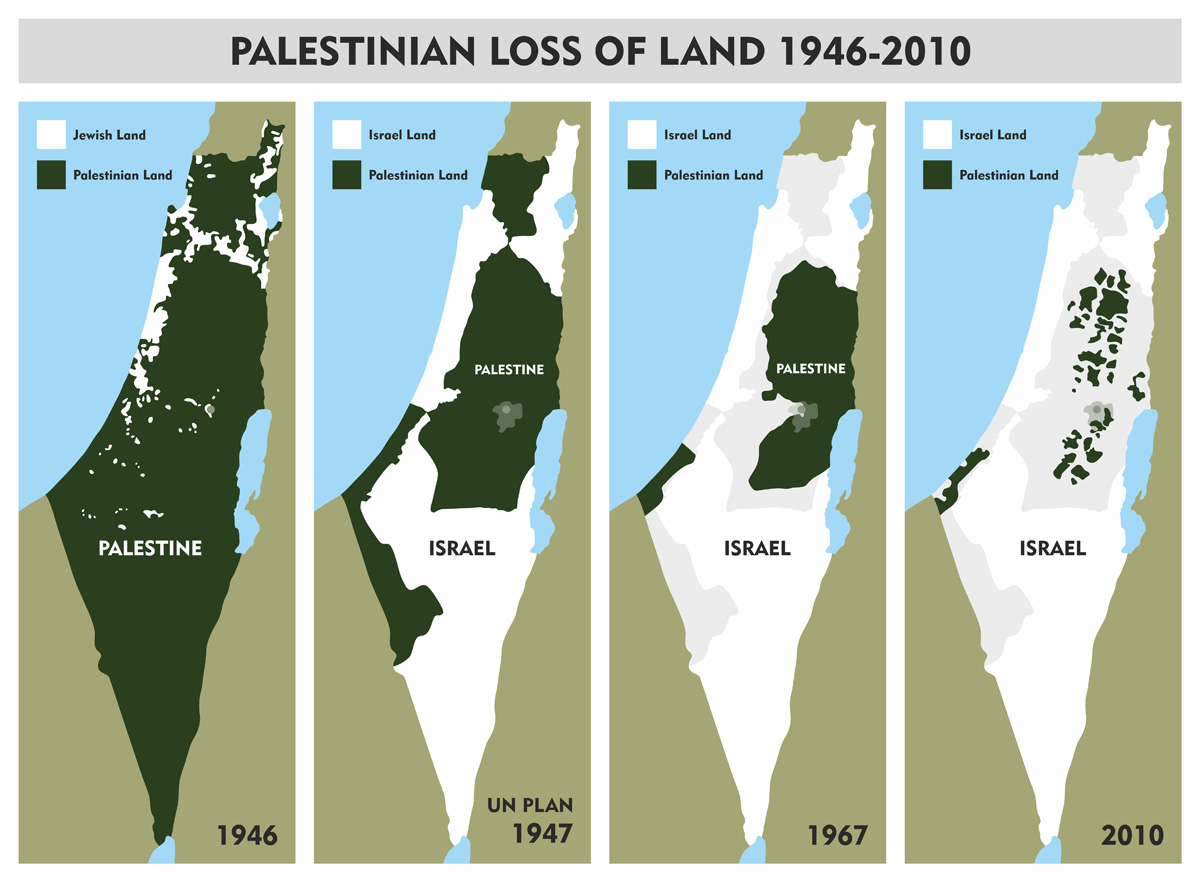
Like all Palestinians who have lived in historic Palestine since its fragmentation in 1948, Palestinian writers face enormous day-to-day challenges. Four contemporary Palestinian writers living in the occupied West Bank—Mahmoud Shukair, Suad Amiri, Sahar Khalifa, and Raja Shehadeh—are meeting these challenges, each with a unique and powerful voice.
In Palestinian writing, the historical, the political and the literary are inextricably entwined. The Arabic novel in general has had a history of transgression against the repressive regimes whose demise the world has recently witnessed. Writers have often used allegory and an odd mixture of fact and fiction to bypass censorship, as in, for example, several of Naguib Mahfouz’s novels. This trend of locating the powerful influence of government in people’s lives is sometimes viewed as a drawback, holding Arab writers back from more imaginative and literary modes of writing, but Palestinian writers feel that they have no choice in the matter and have succeeded in transcending the limitations of this genre.
Displacement, exile, and alienation from the world, but also endurance, ultimately, are at the heart of the Palestinian story. More than 600,000 Palestinian refugees were refused the right of return to their homeland by the newly established Jewish State of Israel in 1948. There are today an estimated 6 million Palestinian refugees, 1.4 million of whom live in fifty-eight recognized refugee camps in Jordan, Lebanon, the Syrian Arab Republic, the Gaza Strip, and the West Bank, including East Jerusalem. Over four hundred Palestinian villages were physically erased, and the Palestinians who did manage to stay in what is now Israel proper (about 1.5 million today) continue to be discriminated against and denied basic rights.
In addition to highlighting the routine, daily difficulties and humiliations that living under occupation entail, Shukair also highlights the problems his characters face as a result of personal and social foibles, using exaggeration and farce for comic or ironic effect, even when violence is involved.
The West Bank (occupied by Israel since 1967 and now cut off from it by a concrete wall, 85 percent of which is located in the West Bank, rather than on the 1967 Green Line) boasts of four Palestinian authors who are successfully bearing witness to the injustices under which Palestinians continue to live—and they’re doing so without getting mired in polemics, abstractions, and ideology.
* * *
Mahmoud Shukair is the author of numerous short stories, creative nonfiction, TV dramas, folklore, and stories for children. Like thousands of other Palestinians, Shukair has been jailed twice by the Israeli authorities and was deported to Lebanon in 1975, returning from exile only in 1993, after having lived in Amman, Beirut, and Prague. He has worked as a teacher, a journalist, and editor in chief of a couple of literary and cultural magazines.
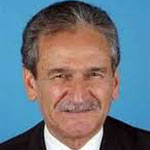 Shukair was born in 1941 in Jabal Al-Mukkabber, southeast of Jerusalem and overlooking the Al-Aqsa Mosque. This area is now inside the Israeli wall and is considered by Israel as part of the greater municipality of annexed East Jerusalem. The wall separates Shukair’s neighborhood in west Al Sawahreh from the rest of the Palestinian community in east Al Sawahreh, whose members need a permit from the Israeli authority to allow funeral processions to reach the town cemetery, which is located in west Al-Sawahreh. To make the situation even more ridiculous, the number of mourners allowed is strictly controlled.
Shukair was born in 1941 in Jabal Al-Mukkabber, southeast of Jerusalem and overlooking the Al-Aqsa Mosque. This area is now inside the Israeli wall and is considered by Israel as part of the greater municipality of annexed East Jerusalem. The wall separates Shukair’s neighborhood in west Al Sawahreh from the rest of the Palestinian community in east Al Sawahreh, whose members need a permit from the Israeli authority to allow funeral processions to reach the town cemetery, which is located in west Al-Sawahreh. To make the situation even more ridiculous, the number of mourners allowed is strictly controlled.
As a Palestinian with a Jerusalem ID, Shukair must daily negotiate the Israeli wall, which runs right through and divides his community. Perhaps it is the absurdities he encounters on a daily basis that have led him to depart from the Marxist sensibilities reflected in his earlier work toward the ironic, farcical, and absurd in more recent writing. Two of Shukair’s recent collections of short stories, Soorat Shakira (2003; Shakira’s picture) and Ibnat Khalaty Condoleezza (2004; My cousin Condoleezza), include stories that revolve around absurd or farcical situations. Some of the titles have references to Western pop cultural figures or well-known politicians, juxtaposing the dreams of certain characters with the remote existence of the outside world and dramatizing the suffocating reality in which these characters live. In Shukair’s “Ronaldo’s Seat,” for example, Kadhim Ali, the main character who is a cab driver, “paid no attention to the difficulties he was exposed to on account of his enthusiasm for the Brazilian football player, Ronaldo.” “Ronaldo’s Seat” and “Shakira’s Picture” are included in Mordechai’s Moustache and His Wife’s Cats (2007), Shukair’s only work thus far that has been translated and published in English.
The main character of the title story is an Israeli Jew called Mordechai. He is “a simple man,” very much like his neighbors in Tel Aviv. His neighbors like him “because he does not disturb them”: “There were tens of thousands like him in Tel Aviv.” However, Mordechai insists on his special status, believing that “there were few like him there.”
For various absurd reasons having to do with his moustache and his wife’s cats, Mordechai reenlists in the Israeli army. He is posted at a checkpoint south of Ramallah, where he comes into close contact with Palestinians for the first time in his life. He notices that “they were silent and anxiously apprehensive as they stood in a long queue in front of the checkpoint, waiting for the opportunity of passing through . . . unarmed human beings waiting for a hand gesture from him.” To suppress his temptation to sympathize with the Palestinians, he focuses his stern looks on young men, “the source of danger, the origin of trouble: for it was they who were the saboteurs girding themselves with explosive belts or concealed Kalashnikov machine guns under their jackets to plant death in the chests of Israelis.” The reader is let in on the thoughts and reveries of Mordechai, a simple man, interested only in the security of Israel and being an “ideal” citizen. “He stood behind the concrete wall of the checkpoint, a steel helmet on his head. Nothing appeared above the wall except his face, his moustache, and parts of his shoulders and hands.” Some of his thoughts are racist, some crude, some paranoid, some horny, some utterly stupid, some whimsical, some meant to squelch his temptation to sympathize. The more he lets his thoughts roam freely, the more he unconsciously twirls his moustache, until a farcical maneuver by the Palestinians at the checkpoint (they start making farting noises each time he reaches for his moustache) forces Mordechai to shave off his moustache.
Although Shukair includes humanizing details about this Isareli character at the beginning of the story to allow his Arab readers to empathize and see his humanity, the story is basically farcical, and Mordechai comes off as a ridiculous character by the end. The contact between the Arabs and the Israelis this story is meant to illustrate remains that of conquered and conqueror.
In “Shakira’s Picture,” the pop singer Shakira from Brazil is enlisted to aid the narrator’s cousin, Talha Shakirat. Talha needs a permit from the Israeli Ministry of the Interior, “at whose door the people of Jerusalem had been suffering for many years.” The permit is necessary for Palestinian Jerusalemites to travel abroad from the airport in Tel Aviv. Talha suffers the various indignities of petitioning for the permit silently because “he wanted the people of the neighborhood to carry on believing he was a man of importance.” When the Israeli guard calls Talha’s name and asks naïvely if he knows Shakira (the singer is of Arab origin), Talha does not hesitate to pounce on this imaginary connection in order to ease his situation.
In addition to highlighting the routine, daily difficulties and humiliations that living under occupation entail, Shukair also highlights the problems his characters face as a result of personal and social foibles, using exaggeration and farce for comic or ironic effect, even when violence is involved. Kadhim Ali, in “Ronaldo’s Seat,” convinces himself that Ronaldo, his wife, and child are coming to visit him and will spend a month or two as his guests. The cab driver’s delusion becomes so real that he prevents any of his customers in the neighborhood from sitting in the front seat of his taxi, which he is reserving for Ronaldo. Kadhim’s behavior is at first dismissed as an eccentricity by his community until a rumor spreads “like a storm in the neighborhood” that the seat business has something to do with illicit assignations with women. And when the Israeli authorities blow up three new houses in the neighborhood (Palestinians in Jerusalem need a permit to build, remodel, or renovate their homes, which is very difficult or impossible to obtain, so Palestinians sometimes build without it), other rumors circulate, and suspicions about Khadhim Ali (of collaboration with the Israelis) become “firmly founded,” with dire consequences for Khadim, who, nevertheless, stubbornly continues to reserve the front seat for Ronaldo.
* * *
In her first book, Amiri touches on many of the themes that Shukair and other Palestinian writers address, but because she is writing creative nonfiction, her work has had a stronger impact on readers, especially in the West.
Suad Amiri, a West Bank Palestinian who writes in English, also highlights “what is ludicrous, brutal, ordinary, and fantastical about the situation of Palestinians in Palestine,” as described on the cover of her first book, Sharon and My Mother-in-Law (2006). The idea of the book started as emails Amiri wrote to friends during the 2001 Israeli incursion into Ramallah and the destruction of Yasser Arafat’s headquarters and then developed into diaries spanning from 1981 to 2004, beginning with her move from Amman to Ramallah. Amiri, an architect by profession, grew up in Amman, Damascus, Beirut, and Cairo, the result of her parents’ peripatetic life as refugees from Jaffa in 1948. She continues to have problems acquiring a Palestinian ID.
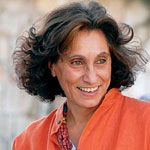
In the introduction, Amiri describes the sensibility of her book as “stepping out of the frame to observe the senselessness of the moment, a valuable self-defense mechanism against the occupation of our lives and souls. Only through taking ‘one step to the side’ could I observe and recount the absurdity of my life and the lives of others.” One absurd situation Amiri describes in “A Dog’s Life” involves the bizarre regulation that allows her pet dog to be issued the much-coveted Jerusalem ID. Amiri quickly schemes to use the dog’s ID in order to enter Jerusalem herself, and actually goes through an Israeli checkpoint explaining: “I am the dog’s driver. As you can see, she is from Jerusalem and she cannot possibly drive the car or go to Jerusalem all by herself.”
In her first book, Amiri touches on many of the themes that Shukair and other Palestinian writers address, but because she is writing creative nonfiction, her work has had a stronger impact on readers, especially in the West. She gives her anecdotes a humorous twist that takes the edge off the existential quandaries she’s describing. For example, in an incident connected with her fifteen-year-old neighbor, Rami, that takes place during the 1987 uprising (which lasted for almost six years), her subject is the deadly serious one of Palestinian collaboration with Israeli authorities. Yet she manages to find an absurd angle from which to develop her narrative, one that is similar to Shukair’s in “Shakira’s Picture.” The incident begins as a meditation on the lengths one would go to in order to ease daily existence under occupation: “Not having to stand in line in the rain and the hot summer sun . . . not having to spend hours trying to get all sorts of permits.” So when she hears from Rami how the Israelis have recruited him as an informer—with the promise that his brother Walid would be released from prison, that they’ll give him a bank account, that he’ll meet “really nice girls,” that he’ll receive the phone number of Israeli officers to whom he is asked to report—all she can flippantly think of is the “incredible” news that Rami has direct access to Israeli officers who might be swayed to ease things up: “That is impressive, I thought to myself. That alone would make me collaborate with anyone.” It turns out that Rami’s whole family is collaborating. Amiri writes, “I was afraid for him but also of him. I was angry at him but also for him. . . . I wanted to protect him by saving him from himself, from his father, from his mother, from the bloody Israelis, but also from the vengeance of the Palestinian underground.”
The incident about Rami ends grimly with the death of his brother of an overdose of drugs—yet another Israeli inducement for collaboration. Another anecdote involving the same family that takes place ten years later immediately follows. Amiri can make sense of what happens only by depicting it as a soap opera and by turning her neighbors into caricatures. The scene begins when Amiri is urgently summoned by Um Zahi (the mother). Rushing to her neighbor’s house, she passes by Rami and his brother at the father’s shop (earlier described as “a window for spying on the neighborhood”), who are standing by shattered glass from a window at the back (the result of neighborhood payback), with a “rage on their faces” that alarms her. The door to the house is wide open. She finds the father (Abu Zahi) bargaining with a man (whose trousers cover a “dangling stomach”) about the prices of cement, stone, and steel. Um Zahi in the bedroom, with the door also wide open, is distraught over bizarre recriminations (between her and her son, Rami) of sexual misbehaviors, only to recover much too quickly when Abu Zahi asks her to fetch money for his transaction from “under the folded shirts” in the cupboard. It is a grotesque picture of a family in disarray, one that has apparently sold its soul to the devil and distorted family relationships, but that is nevertheless looking for redemption through religion. Amiri ends this incident with the news that the couple will be embarking on a haj (pilgrimage to Mecca): “A few months later, from a distance, I saw Um Zahi walking downtown. She was totally covered with a jallabiyyeh and a hijab.”
In her second book, Nothing to Lose but Your Life (2010, also nonfiction), Amiri describes an eighteen-hour journey from the occupied West Bank into Israel that she makes with young Palestinian men seeking work. When the second Palestinian uprising erupted in 2000, Israel stopped issuing permits to Palestinian laborers to work in Israel, many of whom had been earning good pay there since 1967 (relative to what they could make in the West Bank even as professionals). With one stroke, about 150,000 Palestinian laborers and their many dependents lost their means of earning a living. To continue working there, they now have to steal into the country illegally and face being arrested, beaten, and jailed.
The adventure Amiri describes, sometimes impressionistically, sometimes with a touch of surrealism, represents a journey of return to a lost Palestine for her. Though the geographic distance is very short, it takes most of the book for the characters involved to get inside Israel. In normal circumstances, such a crossing would have taken minutes, not fifteen hours. Having spent the evening at Murad’s family’s house, Amiri leaves on the bus with him and his brother in the dead of night. Her senses are heightened:
As the bus engine rattled along winding roads, every now and then I would spot some faint white lights on the far hills indicating an Arab village, or strong orange lights indicating an Israeli settlement. Even though we were driving in the very heart of the West Bank, in theory “Palestinian territory,” orange seemed to reign. For some reason or other, there seemed to be more shining stars over Arab villages.
On the bus, in between friendly joshing among the men and talk of Lebanese singers and football matches, she listens to the stories of the Palestinian laborers and their Jewish employers, of the worker who, when he is feeling dejected as he works in a Jewish settlement in the West Bank, starts thinking, “there would be no end to their occupation” and cuts down on the amount of cement in the mixture. When he is feeling optimistic, he would “pour more and more cement to make these houses last forever,” his reasoning being that “no occupation lasts forever. One day the Israeli army will withdraw, the settlers will leave, and these settlements will eventually become ours.” Then there is the story of the two young men who misplace the brown bags of cheese sandwiches, dried figs, and oranges that their mothers packed. They are at a conference hall in Israel, where they are employed to clean and bus tables. Their brown bags cause panic among the attendees, and they watch, with bewilderment, a robot brought in to “explode” them.
The journey takes place on a moonless night and is fraught with danger as well as senselessness. “Nothing around me made sense. Why should I?” Amiri wonders at several points, especially when she realizes that the panicked flight and confusion engendered among the group by Israeli soldiers in the dark actually happens when the workers are still on the Palestinian side of the eight-meter-high concrete wall. Tired and demoralized from the long trudge and facing the wall, Amiri hallucinates about her companions: “Some whizzed through it, some bounced off it, some had their limbs stuck to it. Some were falling on ‘their side,’ and others were stuck on No Man’s Wall.”
One man who has worked as a laborer in Israel for twenty-eight years says bitterly, “I spent my whole life working for them, and now look at me; like a thief I steal my livelihood in the dark. . . . They have no mercy and they know no God, what else can I say?” After a fifteen-hour march, Amiri and her companions manage to find a slit in the wall and slip into the other side. With some difficulty (the Israeli bus drivers insist on seeing IDs), they get on an Israeli bus—although by that time, it is too late to do a day’s work. They reach their destination, Pitah Tikva, an industrial zone that houses the Israeli headquarters of several multinational companies, which was built over the demolished Arab village of Mlabbis.
Amiri’s “return” is characterized by a strong sense of estrangement: “There is no other place on this planet where I feel so out of place, so out of space, so out of time, so out of history, so out of meaning, so out of logic, so out of my skin, and so outraged as when I am in my historic ‘homeland Palestine,’” she writes. Every reference to a geographic entity, real or conceptual, is in quote marks, dramatizing the writer’s painful difficulties with the physical reality on the ground, a sentiment shared by many Palestinians of all generations and occupations. Of the transformation of a place into something totally alien to her, Amiri writes:
What annoyed me most was the lack of character and the lack of spirit; the place was neither here nor there. It did not have the sophistication of the new and modern cities or the charm of the old and traditional place that it had once been. It had that nondescript emptiness of American suburbia. It was neither European nor Arab looking. I guess it simply looked what it was: Israeli. How could historic Palestine have become so alien so quickly to its original Arab inhabitants?
* * *
She has been described as the Virginia Woolf of Palestinian literature but more political. In her novels, Khalifa often focuses on Palestinian characters who are unable to grasp the full significance of their situation.
Sahar Khalifa is the most translated author after the Palestinian poet Mahmoud Darwish. She was born in 1942 to a conservative family in Nablus and has written ten novels. She has been described as the Virginia Woolf of Palestinian literature but more political. In her novels, Khalifa often focuses on Palestinian characters who are unable to grasp the full significance of their situation. The same spirit of self-examination also drives her to write about women’s struggle for personal freedom within Palestinian society. In her autobiographical novel, Memoirs of an Unrealistic Woman (1986), Khalifa creates a world in which the reader is cast into a claustrophobic, obsessive stream-of-consciousness, which is punctuated by loneliness and cruel domination by her husband in a marriage she did not choose.
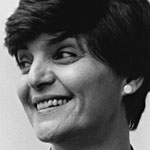 In contrast to Shukair’s and Amiri’s work, Khalifa’s latest book, Hubbi al-Awwal (2010; My first love) is a historic novel that conveys an intimate rather than a grand-scale experience of Palestinian life. It is set in Nablus and flits back and forth between the present to a time before the creation of Israel spanning the period 1939–48. The female protagonist, Nidal (the name means “resistance” in Arabic), an artist in her seventies, has just returned to the West Bank from exile, where she felt like “a roaming human parcel in every airport,” to reopen her deserted family home. She is engulfed by memories as she goes about the house and vividly recalls the period of her adolescence after the death of the Palestinian revolutionary Izz Al-Dine Al-Qassam in 1936 and the continued ramshackle Palestinian resistance against the British colonial army. At that time, the settlement of Jews was at its height in Palestine, and European Jews were buying agricultural land through the Jewish National Fund that dispossessed landless ex-tenant Palestinian farmers through discriminatory labor policies.
In contrast to Shukair’s and Amiri’s work, Khalifa’s latest book, Hubbi al-Awwal (2010; My first love) is a historic novel that conveys an intimate rather than a grand-scale experience of Palestinian life. It is set in Nablus and flits back and forth between the present to a time before the creation of Israel spanning the period 1939–48. The female protagonist, Nidal (the name means “resistance” in Arabic), an artist in her seventies, has just returned to the West Bank from exile, where she felt like “a roaming human parcel in every airport,” to reopen her deserted family home. She is engulfed by memories as she goes about the house and vividly recalls the period of her adolescence after the death of the Palestinian revolutionary Izz Al-Dine Al-Qassam in 1936 and the continued ramshackle Palestinian resistance against the British colonial army. At that time, the settlement of Jews was at its height in Palestine, and European Jews were buying agricultural land through the Jewish National Fund that dispossessed landless ex-tenant Palestinian farmers through discriminatory labor policies.
Khalifa skillfully interweaves the past, present, and future, as Nidal remembers scenes with her grandmother and her revolutionary uncle, hears gory details about the Israeli occupation of the West Bank from her neighbor, and muses about the future. In spite of its tragic sweep of history and the clear-eyed appraisal of Arab betrayals and incompetence, the return of the protagonist to Nablus is an affirmative gesture at the center of the novel. Nidal says to herself:
I find myself now without a friend and without shelter. I have become like a sword, alone. If my relations leave as I have done and if I leave like the rest, who remains here? Nothing remains here except this house. That’s why I have returned, here anew, to make this house, the family house, my first and last house, a gallery, a museum, photographs and drawings and frames, like an exhibit.
Hubbi al-Awwal and other recently published work by West Bank authors suggest a kind of critical self-reflection and an attempt to understand place and time and their relationship to self as well as the Israeli occupation. At a literary conference in Cairo in 2008, Sahar Khalifa had this to say about the confusions she and others have encountered:
We were told that the problem resides not with us but with the conqueror, so we shied away from looking into ourselves, and we shied away from looking at the details of that conqueror. As a result, we do not know who our conqueror is and we don’t know ourselves; we don’t know the causes of our defeat. In other words, we don’t understand reality.
* * *
Raja Shehadeh, another West Bank writer who, like Suad Amiri, chooses to write in English, also delves into the past in order to make sense of the present (see WLT, May 2012, 42–47).
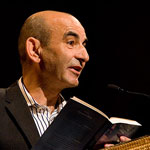 A lawyer by occupation, Shehadeh received the Orwell Prize in 2008, Britain’s prestigious award for political writing, for Palestinian Walks: Forays into a Vanishing Landscape (2008). In Palestinian Walks, Shehadeh describes seven walks through time and place on various Palestinian hills that “would have seemed familiar to Christ” until, “with large infusions from the U.S. it was possible for the State of Israel to make the ‘desert’ bloom with concrete and neon lights.” In walking and narrating them, Shehadeh reclaims what has been lost:
A lawyer by occupation, Shehadeh received the Orwell Prize in 2008, Britain’s prestigious award for political writing, for Palestinian Walks: Forays into a Vanishing Landscape (2008). In Palestinian Walks, Shehadeh describes seven walks through time and place on various Palestinian hills that “would have seemed familiar to Christ” until, “with large infusions from the U.S. it was possible for the State of Israel to make the ‘desert’ bloom with concrete and neon lights.” In walking and narrating them, Shehadeh reclaims what has been lost:
In Palestine, every wadi, spring, hillock, escarpment, and cliff has a name, usually with a particular meaning. Some of the names are Arabic, others Canaanite or Aramic, evidence of how ancient the land is and how it has been continuously inhabited over many centuries. I grew up in total ignorance of any of these names. In this I was not unique. With hardly anyone now walking in the hills, those with this sort of local knowledge are few and far between. With the help of Kamal Abdul Fattah and his students, who interviewed old men and women who could still remember them, some of these long-forgotten names came to be resurrected.
In 1993, as a result of the Oslo Accords, a civil Palestinian authority was set up on densely populated areas in the West Bank called Area A, in which Palestinian populations are surrounded by ever-expanding Israeli “settlements” with a vast network of roads serving the settlements exclusively and connecting them to Israel. Shehadeh reflects on the Oslo Accords and how they have affected even the most mundane aspects of his life:
I had studied the Oslo Agreement well enough to realize it would lead to chaos. So I tried to take measures against what I was sure would be coming. I built my house within the borders of Ramallah, where I considered it would be safe from Israeli expropriation, and proceeded to cultivate my garden and write a book of memoirs, Strangers in the House, that I had long thought about. I was digging my heels in, taking refuge in a stone house and waiting for the tide to change, an honorable tradition in the Holy Land, where over the centuries so many missions, monks, and pockets of religious and ethnic groups founded monasteries, schools, or institutions, and confined themselves within their walls, or stood on pillars, as they waited out the bad times.
Palestinian writing today and in the past is necessarily located in its historical and political context. Not only are the circumstances of Palestinian life extraordinary, the place itself is also extraordinary. “Palestine is no ordinary place,” Edward Said writes in his introduction to Mourid Bargouti’s intensely lyrical account of displacement, I Saw Ramallah. Said continues, “It is steeped in all the known histories and traditions of monotheism, and has seen conquerors and civilizations of every stripe come and go.”
While the brutal reality of occupation and repression dictates the facts on the ground, many Palestinian writers see their role not merely as witnessing and reflecting on the unfortunate events that have befallen them. They see their mission as shaping and preserving a national identity that has been under assault by an unbroken chain of subjugation and defeat for more than sixty years. These writers invite Western readers to enter imaginatively into the existential world that Palestinians depict in their literature, a main function of which is to “shed light” on their reality, to clarify the way they think about themselves and the world around them.
Al Quds University, Occupied West Bank
WORKS CITED
Amiri, Suad. Nothing to Lose but Your Life: An 18-hour Journey with Murad (Qatar: Bloomsbury Qatar Foundation Publishing, 2010)
———. Sharon and My Mother-in-Law: Ramallah Diaries (London: Gantra, 2006)
Barghouti, Mourid. I Saw Ramallah (London: Bloomsbury, 2004)
Khalifa, Sahar. Memoirs of an Unrealistic Woman (Beirut: Dar Al-Adaab, 1986) [Arabic]
———. My First Love (Beirut: Dar Al-Adaab, 2010) [Arabic]
Shehadeh, Raja. Palestinian Walks: Notes on a Vanishing Landscape (London: Profile Books, 2007)
Shukair, Mahmoud. Mordechai’s Moustache and His Wife’s Cats and Other Stories (London: Banipal, 2007)
———. My Cousin Condoleezza: A Collection of Short Stories (Beirut/Amman: Al-Muassassa al-Arabiyah, 2004) [Arabic]
———. Shakira’s Picture: A Collection of Short Stories (Beirut/Amman: Al-Muassassa al-Arabiyah, 2003) [Arabic]










